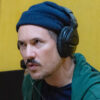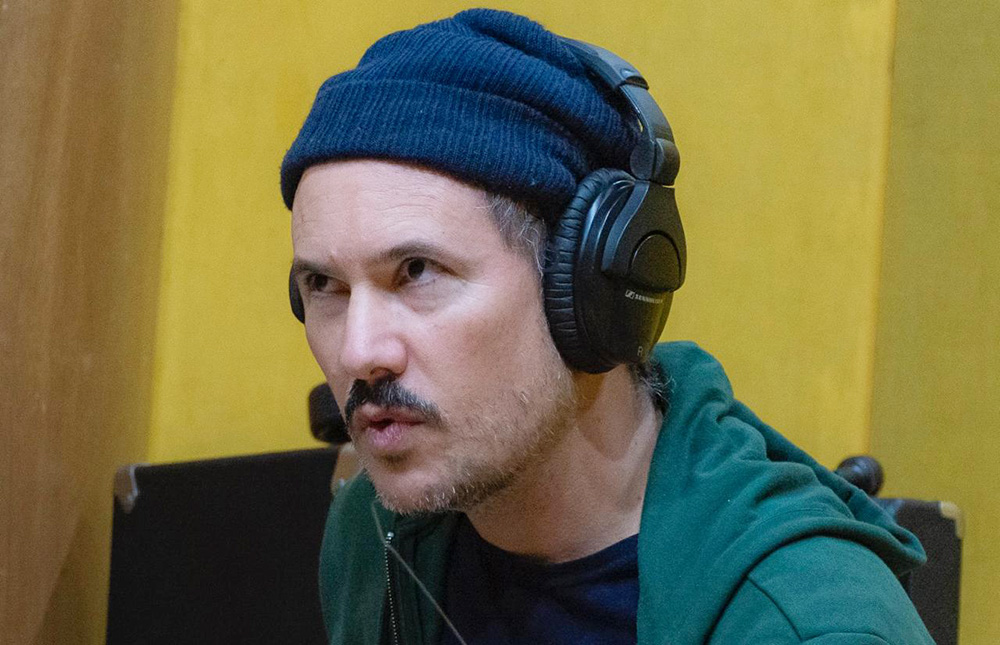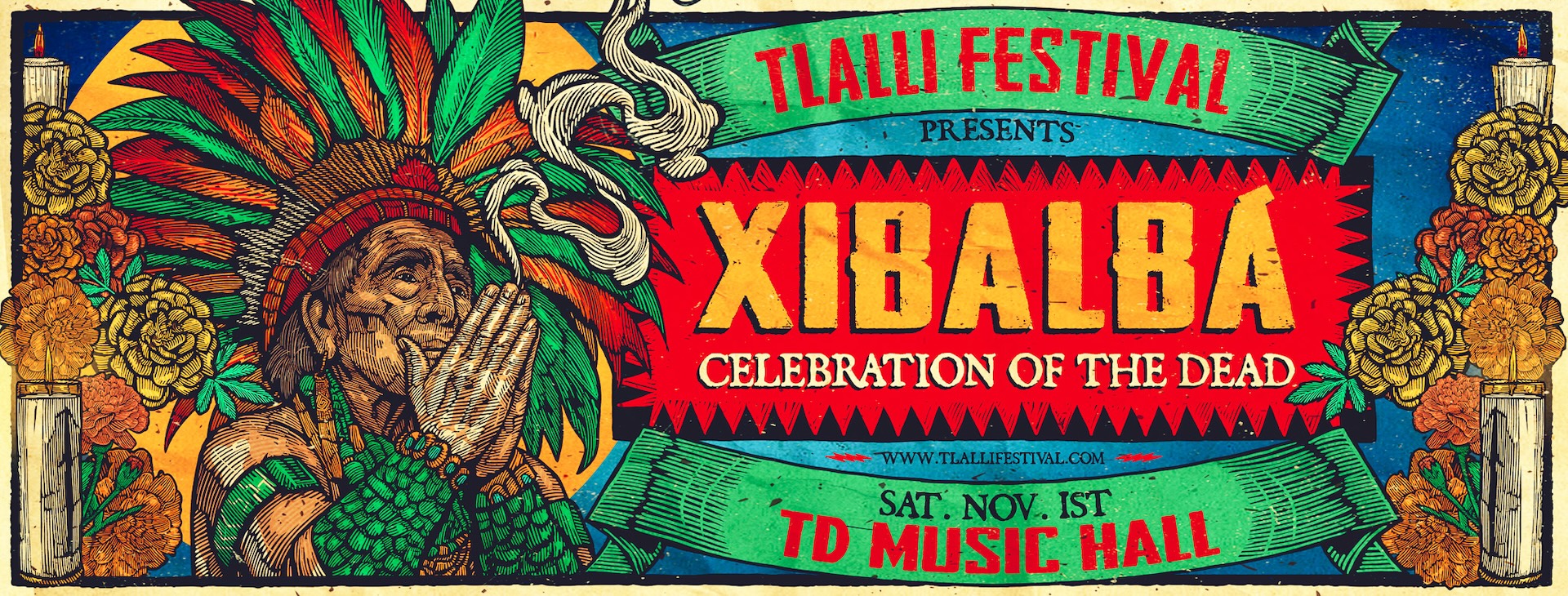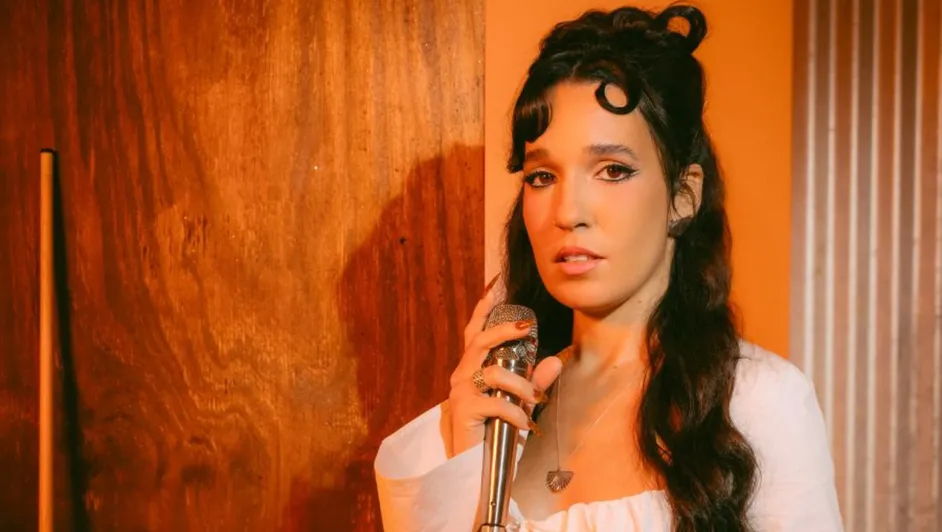Rhythm and dance. Dance and rhythm. This is a real natural force in Colombian culture. It’s an all-encompassing connection — between boiling music and body expression — that comes from ancestral folkloric crossings, from the African and the European, from the indigenous and the popular. It’s a cultural symptom that embraces all regions of this country, with cumbia as the mother and root music genre. Fusion has always played a major role here, even more so in recent times when legacy sounds crossed borders and local music began to dialogue with global music. Colombia’s electronic music scene has not only grown exponentially. It has also given rise to exciting and tropical blends.
So, with a past full of colorful traditions and cultural mestizaje, Colombians are also celebrating the beats of the present — new and unique sounds emerging between global technologies and local rhythms. From pioneers like Sidestepper to new explorers like Acido Pantera, including successful breakthroughs like Bomba Estéreo, this scene is already an unquenchable fire. Yesterday’s carnival is today’s tropical rave.
To help us unravel the intertwining of these intersections of sounds, we are honoured to have the accurate guidance of an active player in this scene: Hilder Brando, also known as Killabeatmaker, a renowned DJ and producer from Medellín with more than 15 years of experience. Able to offer different formats of live performances, including a celebrated DJ set that usually features guest vocals and percussion, he’s also the frontman and singer/MC of RADIOCALIENTE. Hilder is a key figure of the Latin electronic music movement, drawing inspiration from traditional Colombian rhythms and the music of Valle de Aburrá, his home region, mixed with deep bass sounds and urban beats.
“I came to electronica from machines,” says Killabeatmaker, a lifelong devotee of technology. “With drum machines, synthesizers and the use of the computer, I started experimenting in this big and wide genre of electronic music.” There was a time for that turn, just as there was a path to venture. “In 2008, I had a funk band called G98, and when it disbanded, I started working with Ableton Live on South American independent label projects that mixed folk with electronica, like Galletas Calientes and ZZK,” he recalls. “I found a niche that helped me build a career with this music, which led me to tour around the world as a DJ.” Both labels, Galletas Calientes Records and ZZK Records, were founded almost simultaneously in the mid-2000s by world citizens searching for global sounds who were fascinated by the emerging Colombian scene.
Local labels like Polen Records also focused on the influence of tropical music on Colombian electronica. “Cumbia and other traditional rhythms have endowed mostly independent electronic music productions with a unique and far-reaching sound,” explains Hilder. “These folkloric genres bring textures and rhythmic patterns that make electronic music made in Colombia special, connecting with international audiences and keeping alive the essence of our country.” The Medellin-based DJ unfolds his map of the eletropical scene. He highlights exponents such as Acido Pantera and Indus, as well as significant precedents such as Cero39, Mitú and Ghetto Kumbé. Of course, when it comes to tracing the kick-starters of this scene, he points to the seminal names of Bomba Estéreo, Systema Solar, Pernett and Sidestepper.
“They set Bogota ablaze with their performances,” Hilder says about Acido Pantera, a wild trio combining machines and synthesizers with Colombian roots music. New warriors of the electropical scene, Diego Sierra, Juan Por Dios and Yeyo Vázques set out to look inward before venturing out. They found originality in the genres that resonate deep in their country — from cumbia to champeta, from vallenato to merengue — to become a new global sound sensation. Their debut album, 2023’s Alta Pachanga, is a new electronic music experience with a Colombian flavor. There, not only techno and disco-house are mixed with local rhythms, there’s also a hip-hop approach in the lyrics and a wide range of folkloric sounds (gaitas, accordions and traditional drums).
Techno and champeta. Downtempo with currulao and afropop. Layers of acid synthesizers with Afro-rooted percussions. Indus is a constant exploration between the traditional and the modern. This duo, led by Barranquilla producer Oscar Alford, is committed to reinterpreting Colombian folklore through contemporary production techniques, using electronic music to bring roots sounds to a club context. Yes, it’s an invitation to dance and trance through electronic beats. But it’s also a rescue of traditional Colombian sounds, not only because of the contribution of the other half of the duo, percussionist Doctor Keyta, but also because of their celebrated crossovers, from artists such as El León Pardo, Hermes Romero and Nelda Piña to bands such as Las Alegres Ambulancias, Sexteto Tabalá and Son Palenque. Last year, they released Negra on ZZK Records, a new album of sonic surprises that came to continue their colorful discography — consisting of an eponymous 2020 debut album, three singles and two remix EPs for Palenque Records.
Behind the name Cero39 — in homage to an old classic by Colombian vallenato singer-songwriter and accordion player Alejandro Durán — is Bogota-born Mauricio Álvarez. This project came about in 2012 as a result of Álvarez’s exploratory trips a few years earlier between the Magdalena River and the Caribbean Sea. During that time, he soaked up the tropical rhythms that would renew his approaches to house, techno and dubstep. With 15 years of experience and sound mixes ranging from reggaeton to cumbia and from champeta to dembow, Cero39 is one of the most engaging acts in the electropical scene. “He has a very creative and visceral live set, full of energy,” notes Killabeatmaker.
A tropical electronic duo, Mitú is made up of former Bomba Estéreo guitarist Julián Salazar and Afro-Colombian rhythm percussionist Franklin Tejedor. Synthesizers and dance-inducing beats combine with joyful drums and vocals on Palenquero. The result is a vibrant blend of electronica and roots rhythms — there’s a reason they call their sound “jungle techno”. Their debut album, Potro, came out in 2012, followed by Balnear in 2014, which Hilder highlights for its great contribution to the scene. “With Balnear, they took this fusion to a new level with innovation and a strong sound identity,” he says. Then followed Cosmus (2017), Los Angeles (2018), Tandem (2019), Astra (2023) and Danzaaa (2024), plus a few EPs in between. Their live performance is highly acclaimed around the world.
Percussive rhythms and fiery words rumble in the body and make it vibrate. A magical practice where tribal drums intersect with tech house beats, dark and colorful at the same time, in a sort of Afrofuturistic landscape. The imprint of a ritual is almost unavoidable in Guetto Kumbé’s world. Originally from the Colombian Caribbean coast but based in Bogota, this trio is made up of singer and producer El Guajiro, percussionist Chongo and West African percussion master Doctor Keyta (also a member of Indus). After two promising EPs, 2016’s Kumbé and 2017’s Soy Selva, they released their eponymous debut in 2020 on ZZK Records. In 2022, that same album was reborn on the dancefloor as Ghetto Kumbe Clubbing Remixes, with contributions from DJs like Cero39 and Nickodemus.
“It’s a display of energy and powerful performers of electropical champeta!” Hilder gets excited about Systema Solar. This music-visual collective from the Caribbean region of Colombia is among his favorites, both for its impact and its sound. Party-oriented and notoriously influenced by the sound system culture, Systema Solar was formed in Santa Marta in the mid-2000s. It’s a collective in every sense, not only because of its musicians but also because it includes MCs, DJs and VJs. Devoted to dance in their performances, they make colossal crossings between Caribbean rhythms and EDM, mixing champeta, bullerengue, cumbia, vallenato and salsa with techno, house, breakbeat, breakdance, hip-hop and scratching. They have released four studio albums, plus some singles and EPs.
Killabeatmaker affirms that there’s a before and after Bomba Estéreo in the evolution of this scene. “Bomba Estéreo marked a before and after by proving how Colombian music mixed with electronic music can conquer global stages without losing its cultural essence,” he argues. “Their success inspired many artists, including myself, to explore the mix of the native with the modern, driving a new wave of musicians who today represent Colombia on the international stage.” World-renowned, this Bogotá-based band was formed twenty years ago and is still going strong with two of its original members, singer Li Saumet and music producer Simón Mejía. Their impact isn’t only evident in Colombia, as Hilder explains, but also throughout the region, alongside an electro-Caribbean wave of Latin alternative pop, including Sotomayor (Mexico), Buscabulla (Puerto Rico), Mula (Dominican Republic) and Reyna Tropical (Los Angeles).
Hilder Brando mentions other key artists who have left their mark on the scene, such as the multi-instrumentalist Pernett, who has been fusing traditional Colombian sounds with electronic textures for years. But there’s one name that comes up repeatedly, a name that stands as the main reference: Sidestepper. According to the Medellín-based DJ, it’s impossible to think of a Colombian tropical electronic music movement without Sidestepper, a project set up by British producer Richard Blair around 1997: “Pernett, Bomba Estéreo, Cero39, ChocQuibTown, Ghetto Kumbé…. All these artists — and others who continue to explore and evolve this fusion between traditional rhythms and electronica — were influenced by the innovative work of Sidestepper.”
The story goes that Richard Blair fell in love with Colombia in the early 90s, after working with Totó La Momposina at Peter Gabriel’s Real World Studios in England. He arrived in 1993 and ended up settling in Bogotá, where he became the producer of Carlos Vives and alternative groups such as Aterciopelados and Estados Alterados. From these experiences and his contact with local sounds, he created Sidestepper, a project that initially focused on the fusion of electronic genres such as drum and bass with Antillean and Colombian music such as salsa, cumbia and bullerengue. “I consider that Sidestepper has been the most solid project in the fusion of electronic music with the rhythms of the Colombian coast,” says Hilder. “Blair played a fundamental role in the consolidation of this sound, laying the groundwork for a new generation of artists who have continued to explore this connection between the ancestral and the modern.”
With over 25 years of career, Sidestepper has released many records on labels of all kinds, from Palm Pictures to Sony-BMG, from Polen to Real World. It has also had different line-ups, with valuable contributions from artists such as Iván Benavides and Teto Ocampo (Bloque de Búsqueda), Sergio Arias (Malalma), Andrea Echeverri (Aterciopelados), Goyo (ChocQuibTown), Chongo (Ondatrópica), Jacobo Vélez (La Mambanegra) and Kike Egurrola (Bomba Estéreo), among others. Their latest album, 2016’s Supernatural Love, reflects a search for even more organic and natural sounds. Their performance at KEXP the following year proves it.
Colombian electronic music, with or without tropical fusion, has been expanding since the 2000s across two epicentres: Bogotá and Medellín. Of course, there are other boiling points throughout the country. “Each city in Colombia brings a unique dynamic,” says Hilder, in an attempt to geographically shape the scene. “Bogotá and Medellín lead the way thanks to their solid business infrastructure and a constant supply of festivals and events. Cali stands out for the emergence of a new generation of talented DJs and producers. Barranquilla maintains a deep connection to its African heritage, reflected in the popular genres that resonate on radio stations and in the streets. Cartagena, with its strong link to tourism, has a more international vibe that allows for the fusion of global musical influences.” And that’s not all, our guide recommends paying attention to two more cities: “Pereira and Manizales have a growing scene focused on techno and underground parties, becoming key spots for lovers of alternative electronic music.”
Killabeatmaker turns over his cards and unveils key names from the pure electronic scene. He talks about the “impeccable show” of KhoMha, a fellow citizen, DJ and producer identified with trance and outer space. Then there’s Verraco, also from his city, co-founder of the TraTraTrax label and an essential figure in the local projection of electronic music. Originally from Medellín and based in Bogotá, Natalia París is a model and entrepreneur who is constantly evolving as a DJ in her Afrohouse set. Originally from Cali but also based in the Colombian capital, Daniel Amézquita, better known as Moska, was able to inject Latin flow into the universal pulse of house music, becoming one of the most prominent Latin American DJs on the global scene and signing to Tiësto’s label, Musical Freedom. Closer to his vibe of mixing local rhythms with electronic music, Hilder includes three more names in his top-list of DJs: Chriz Samz (rising DJ he knows from collaborations and to whom he predicts a great future), Cato Anaya (renowned DJ from Barranquilla faithful to the tropical house sound) and Fabi Hernández (more than a DJ, “a master in the fusion of traditional Colombian music with tech house”, according to him, responsible for sealing hits with bullerengue singer Matheu Ruz or Latin house king Allan Piziano).
Of course, it’s not just about DJs. Hilder emphasises the exposure offered by festivals such as Ritvales in Medellín and the Baum Festival in Bogotá. Heirs to nineties clubs such as Cinema in Bogotá and Plataforma in Medellín, there are emblematic venues that have been fundamental pillars in strengthening and consolidating the scene, such as Salón Amador in Medellín, and Octava Club in Bogotá — the only Colombian nightclub that can boast of having been ranked among the top 100 in the world by DJ Mag. He also explains how the CDA awards have played “a key role in making Colombian talent visible”.
“Colombian electronica is going through a moment of boom and expansion,” says Killabeatmaker, describing the current state of the scene. “After the pandemic, audiences in the country’s main cities started to flock to raves and festivals, which opened up space for local DJs. Also, during the confinement, many artists took advantage of the time to create music, and releasing under our labels became a key trend, giving us the freedom to release songs independently.” The Medellín-based musician and DJ explains that this growth has been strengthened by the collaboration between artists, promoters, events, brands and music producers. “All this has been consolidating an ecosystem that positions Colombia as a global reference for creativity and a sound destination,” he concludes.
Don’t miss your chance to catch Killabeatmaker live in Miami on Wednesday, April 30th at Caracas Bakery at Beats Per Mile.








